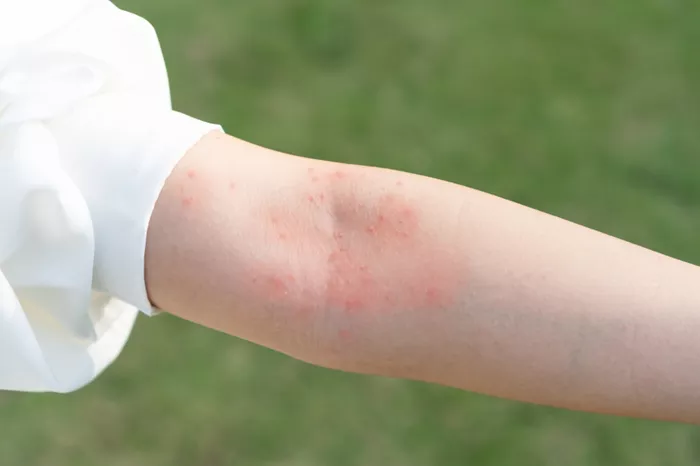As the weather shifts from the intense summer heat to the humid monsoon, individuals often experience a variety of skin issues including infections, rashes, and irritations. High temperatures, increased humidity, and unpredictable weather conditions can exacerbate skin problems, particularly for those with existing allergies or conditions. To mitigate discomfort and avoid long-term skin issues, understanding and managing common rashes during this transitional period is essential. Dr. Ruben Bhasin Passi, a Consultant in Dermatology at CK Birla Hospital, Gurugram, offers insights into prevalent skin rashes, their causes, and preventive measures.
1.Heat Rash (Prickly Heat)
Heat rash, or miliaria, is a frequent skin condition during the summer and early monsoon. It occurs when sweat gets trapped under the skin due to blocked sweat ducts, leading to small, red, irritating bumps. These bumps typically appear in areas where sweat accumulates, such as the crotch, under the breasts, back, and armpits.
Prevention and Treatment
To prevent heat rash, it is important to keep the skin cool and dry. Wearing loose, breathable cotton clothing can help, and staying in well-ventilated or air-conditioned environments during peak heat is advisable. If heat rash develops, keeping the affected area cool and dry is crucial. Persistent or worsening rashes should be evaluated by a dermatologist.
2.Hives (Urticaria)
Hives, characterized by red, raised welts, can appear anywhere on the body and are often triggered by allergens such as pollen, insect bites, or certain foods, which become more prevalent during the monsoon. Hives may resolve on their own within a few hours but can also become severe and require medical attention.
Prevention and Treatment
Avoiding known triggers is key to managing hives. Antihistamines can help alleviate itching and reduce the rash. Immediate medical help is required if hives are accompanied by symptoms of anaphylaxis, such as swelling of the face or tongue, difficulty breathing, or a rapid heartbeat, potentially necessitating an emergency epinephrine injection.
3.Fungal Infections
The increased humidity of the monsoon season fosters fungal infections like athlete’s foot, jock itch, and ringworm. These infections often affect moist areas such as the crotch, underarms, and feet, presenting as red, scaly, itchy patches that can spread if untreated.
Prevention and Treatment
Preventing fungal infections involves maintaining cleanliness and keeping skin dry, especially in areas prone to sweating. Changing out of damp clothing quickly and opting for moisture-wicking fabrics can be beneficial. Over-the-counter antifungal treatments may address minor infections, but persistent or extensive infections require a dermatologist’s evaluation. Steroid creams should be avoided as they can worsen fungal infections by suppressing the skin’s immune response.
4.Photo-Contact Dermatitis
Photo-contact dermatitis occurs when the skin reacts to specific substances after sun exposure. Common triggers include fragrances, lotions, dyes, and insect repellents, leading to rashes, itching, and sometimes blisters and peeling.
Prevention and Treatment
To prevent photo-contact dermatitis, exercise caution with new skincare products during the summer and monsoon. Patch-testing new products on a small area of skin before widespread application is recommended. Using a broad-spectrum sunscreen can also help. For further advice and treatment, consulting a dermatologist is advisable.
Understanding these common skin issues and their management can help ease the transition between seasons and promote overall skin health.
Related topic:
8 Ways to Treat Acne Under Eyes
What is microdermabrasion for acne?
How to Get Rid of White Spots Under Eyes?


